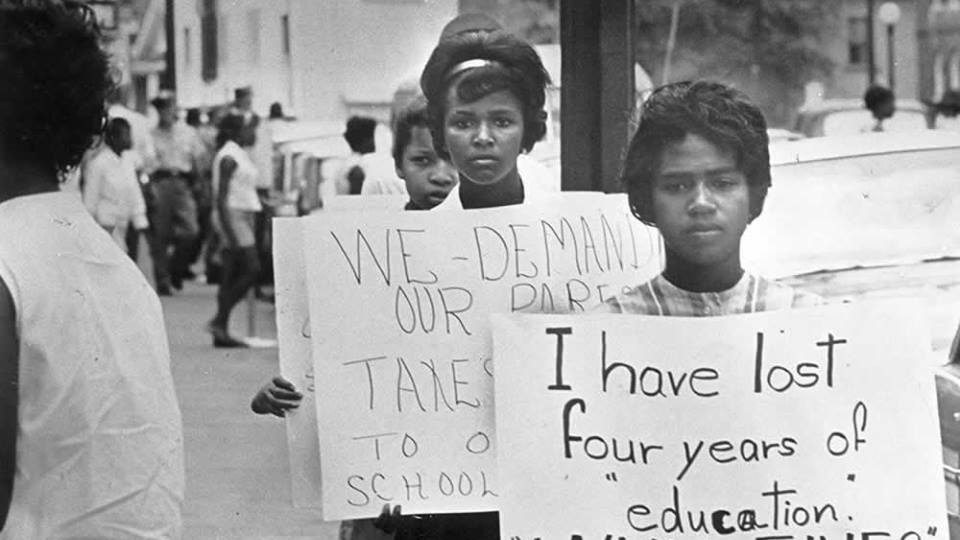Created Equal: Schools still segregated 70 years after Brown v. Board decision, report finds
Created Equal May 13, 2024A new report from The Civil Rights Project at UCLA found that schools are still deeply segregated in the U.S. The report’s co-author, UCLA Professor Gary Orfield, joined the show to discuss his findings.

Students in Farmville, Va., protest against the school board's decision to close their school for five years rather than integrate following the Brown v. Board of Education Supreme Court decision.
In 1954, the United States Supreme Court determined in the landmark Brown v. Board of Education decision that segregating schools based on race was unconstitutional.
During the 1960s, states slowly started integrating schools after the 1964 Civil Rights Act was passed, and the number of segregated schools across the U.S. started going down.
However, a new report from The Civil Rights Project at UCLA says that segregation has been trending upward for decades. The report, titled “The Unfinished Battle for Integration in a Multiracial America from Brown to Now,” suggests that while the South is dramatically less segregated than it was before the Brown decision, its goals have not been fully attained — and in fact, we’ve been moving backward.
Gary Orfield, distinguished research professor at UCLA and the report’s co-author, joined Created Equal on Monday to discuss the report’s findings and how modern segregation is negatively impacting student outcomes.
Subscribe to Created Equal on Apple Podcasts, Spotify, Google Podcasts, NPR.org or wherever you get your podcasts.
Guest:
Gary Orfield is a distinguished research professor of education at the University of California, Los Angeles. He says integration was delayed due to opposition to the court decision
“It was 10 years after Brown, 98% of Black students were still in completely segregated schools, and there were virtually no Black teachers teaching white students across the 17 states that had segregation by law,” he said. “Only after the 1964 Civil Rights Act was passed did we really get integration, and then we got a lot of integration over the Johnson administration period when this law was actually enforced.
“The South went from almost absolute segregation, to becoming the most integrated part of the United States,” Orfield said.
Orfield said his research emphasizes the striking differences in student outcomes with the advancement of modern segregation across the U.S.
“We try to equalize opportunity, and the schools are supposed to do it, but we provide the worst schools to the students that need school the most and rely on the school the most,” he said. “So what we do is we run a school system that is the only option for mobility for many young people, and we give [poorer kids] the least chance, and a path that isn’t really well articulated towards college.”
Listen to Created Equal with host Stephen Henderson weekdays from 9-10 a.m. ET on 101.9 WDET and streaming on-demand.
Trusted, accurate, up-to-date.
WDET strives to make our journalism accessible to everyone. As a public media institution, we maintain our journalistic integrity through independent support from readers like you. If you value WDET as your source of news, music and conversation, please make a gift today.
